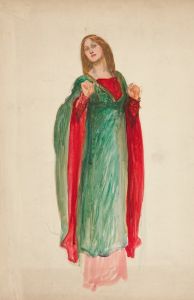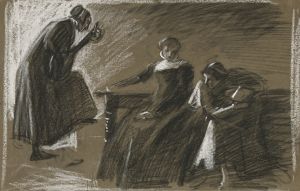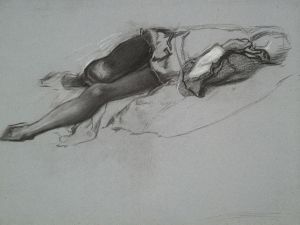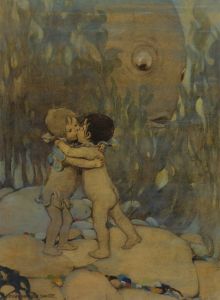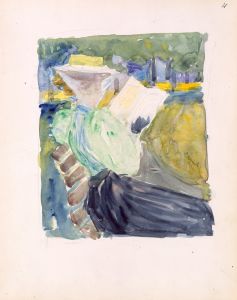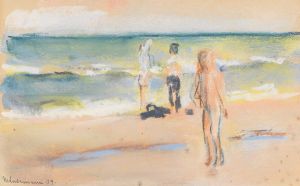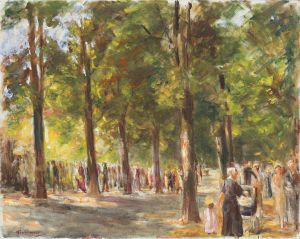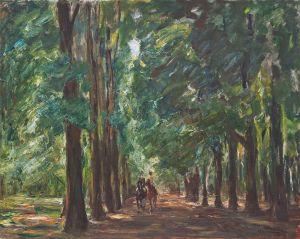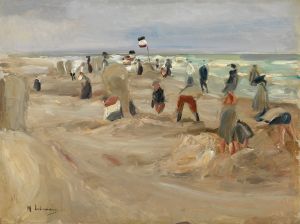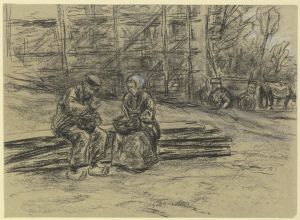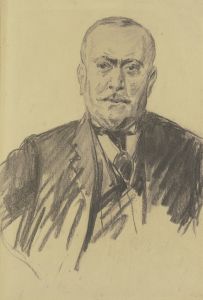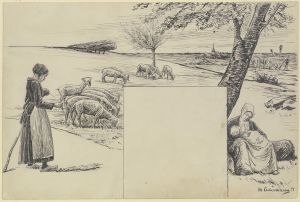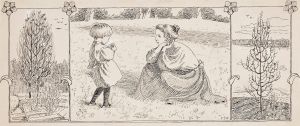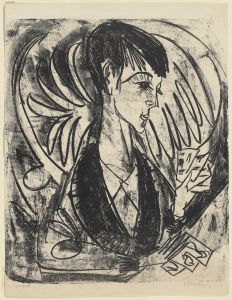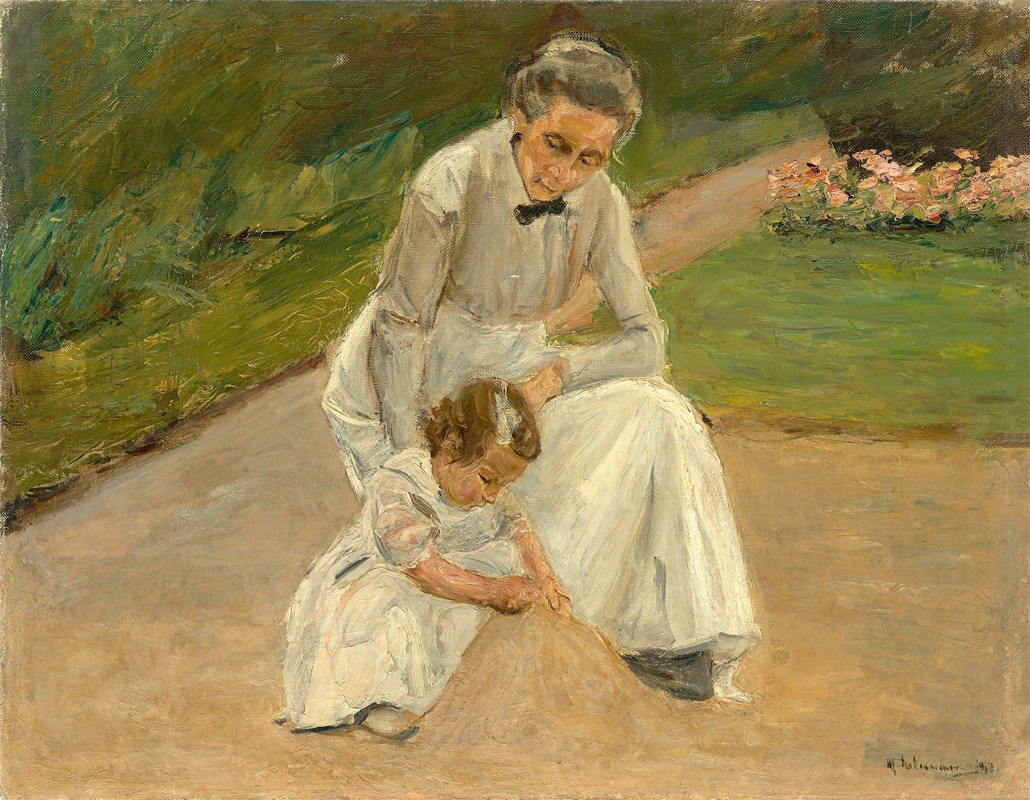
Enkelin und Kinderfrau beim Spielen im Garten
A hand-painted replica of Max Liebermann’s masterpiece Enkelin und Kinderfrau beim Spielen im Garten, meticulously crafted by professional artists to capture the true essence of the original. Each piece is created with museum-quality canvas and rare mineral pigments, carefully painted by experienced artists with delicate brushstrokes and rich, layered colors to perfectly recreate the texture of the original artwork. Unlike machine-printed reproductions, this hand-painted version brings the painting to life, infused with the artist’s emotions and skill in every stroke. Whether for personal collection or home decoration, it instantly elevates the artistic atmosphere of any space.
"Enkelin und Kinderfrau beim Spielen im Garten" (Granddaughter and Nanny Playing in the Garden) is a painting by the German artist Max Liebermann, a leading figure in the German Impressionist movement. Liebermann was born on July 20, 1847, in Berlin, and he became one of the most influential painters in Germany during the late 19th and early 20th centuries. His works often depicted scenes of everyday life, capturing the simplicity and beauty of ordinary moments with a keen eye for detail and light.
This particular painting, created in 1902, showcases Liebermann's skill in portraying intimate family scenes and his mastery of light and color. The painting features a young girl, presumably Liebermann's granddaughter, and her nanny playing in a lush garden. The garden setting is typical of Liebermann's work, as he often painted outdoor scenes that highlighted the natural beauty of the surroundings.
The composition of "Enkelin und Kinderfrau beim Spielen im Garten" is both charming and serene. The young girl is depicted in a white dress, which contrasts with the darker attire of the nanny. They are engaged in a playful activity, which adds a sense of movement and liveliness to the scene. The garden is rendered with vibrant greens and dappled sunlight, creating a warm and inviting atmosphere. Liebermann's use of loose brushstrokes and his attention to the effects of light are evident in the way the sunlight filters through the trees and illuminates the figures.
Max Liebermann's work was heavily influenced by the French Impressionists, particularly Édouard Manet and Edgar Degas, whom he admired for their innovative approaches to capturing modern life. Liebermann's own style evolved over the years, moving from a more realistic approach to a looser, more impressionistic technique. This evolution is evident in "Enkelin und Kinderfrau beim Spielen im Garten," where the brushwork is freer and the focus is on the overall impression rather than precise details.
Throughout his career, Liebermann faced both acclaim and controversy. As a prominent Jewish artist in Germany, he experienced the rise of anti-Semitism and the challenges it brought. Despite these obstacles, he remained a central figure in the German art world, serving as the president of the Berlin Secession and later the Prussian Academy of Arts. His contributions to art were significant, and his legacy continues to be celebrated today.
"Enkelin und Kinderfrau beim Spielen im Garten" is a testament to Liebermann's ability to capture the essence of everyday life with sensitivity and grace. The painting remains an important example of his work and is appreciated for its depiction of familial love and the beauty of nature. Liebermann's art, characterized by its light-filled scenes and tender portrayals of human interaction, continues to resonate with audiences, offering a glimpse into the artist's world and the moments he cherished.





